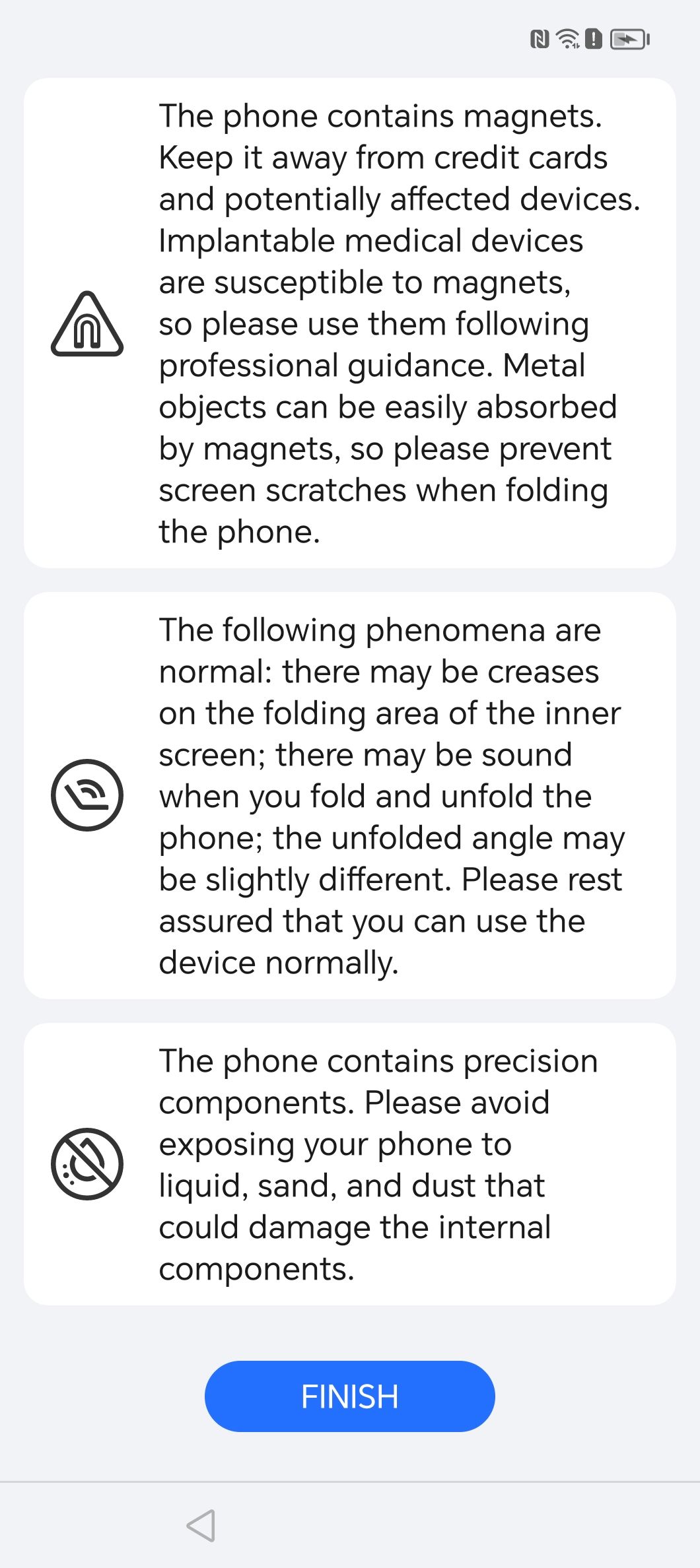Key Takeaways
- Foldable phones have durability issues and may show signs of long-term wear and tear.
- They are still expensive, costing more than non-folding flagships, with limited affordable options.
- The technology needs further refinement as creases remain noticeable, batteries are smaller, and app optimization is lacking.
As more smartphone brands invest in foldable phones, the variety on the market increases. But despite the progress that the foldable format has made in the past few years, I still hesitate to buy a folding phone for these reasons…
1 The Durability Issue


I shudder to think of the days when phones weren’t water or dust-proof. Small accidents could ruin a device completely. And as someone who regularly cleans their smartphone by wiping it down with alcohol, resistance to liquids is essential.
But due to their flexible nature, foldable smartphones still have a long way to go when it comes to durability. Usually, when you start up a foldable phone, you’re greeted with a series of warnings which include things like:
- Do not press hard or sharp objects on the phone screen.
- Keep the phone away from credit cards and devices that are affected by magnets.
- Avoid exposing the phone to liquid, sand, and dust.
Samsung has made some advancements in the durability of its phones, but there’s still a lot that can go wrong with folding devices. You also can’t apply a screen protector like you would on a normal smartphone.
2 They’re Still Very Expensive
The relatively new technology of foldable screens comes with a premium price, even if the rest of the phone’s specs aren’t that impressive. For example, the Samsung Galaxy Z Fold 6 launched at a price of $1,899. This is in comparison with the company’s non-folding flagship, the Galaxy S24 Ultra, which launched at $1,299.
Depending on what you’re looking for in a phone, you could argue that the S24 Ultra is the better deal; with a built-in S-Pen, bigger battery, and more powerful camera lenses.
There are some companies working on more affordable options, but they’re not necessarily set to launch in the US market.
3 The Technology Still Needs to Be Refined
While companies have made improvements to foldable phone technology, they still have a way to go before they become an easy buying decision without multiple trade-offs.
On many foldable smartphones, the crease remains noticeable. And I’ve come across devices that have been used long-term that begin to show deterioration and dead pixels along the crease.
The fact that these phones also usually include dual batteries usually results in smaller batteries, around 4,400mAh, rather than the 5,000mAh we see on many flagships. While apps are able to adjust to the form factor, I don’t feel like enough apps take full advantage of the technology.
There are reasons to love foldable phones, but often I’m so worried about damage or don’t use the foldable-specific features enough to really feel a benefit from them.
4 Updates Have Been Iterative
Despite the technology maturing, I feel that many companies have already fallen into the habit of small updates between generations that don’t justify the increase in price. This is a problem across both the folding and non-folding smartphone formats, but I find that it’s particularly egregious when it comes to folding phones.
Some companies are more guilty of this than others. But often it feels like we’re getting minor design tweaks rather than real advances. When companies find a way to make significant strides in durability and usability, then I’ll be more likely to consider buying a foldable smartphone.
5 Foldability Adds Limited Benefits
There are two main foldable phone form factors: book and clamshell. The book format, seen on phones like the Galaxy Z Fold 6 and Honor Magic V2, features a vertical fold line, allowing you to close the screen like a book. The clamshell or compact format, featured on phones like the Oppo N3 Flip and Galaxy Z Flip 6, fold along a horizontal line like a compact mirror or flip phone.
The benefits depend on what form factor you get. For book foldables, you get a larger screen when you unfold the phone. This can give you better visuals and can enhance productivity when you display two apps at once.
For the clamshell form factor, the benefits are that you can use the lower part of the phone as a tripod and you can fold the phone into a smaller format, allowing for easy transportation. You can also see notifications and camera previews on the cover screen.
While these are cool extra features, taking into account the price and durability limitations of these phones, they’re not worth the trade-offs for me. When I do want for a bigger screen on my phone, switching to a tablet or my PC suffices. And I don’t often find myself needing a tripod to take a quick photo.
The apps and features available on cover screens are also still relatively limited. While there are some interesting gimmicks, they don’t unlock the full potential of the form factor.
Don’t get me wrong — phones like the Honor Magic V2 make me very hopeful for the future of foldable smartphones. But it will take a bit more refinement and development before I’d be ready to invest in a foldable smartphone myself.



